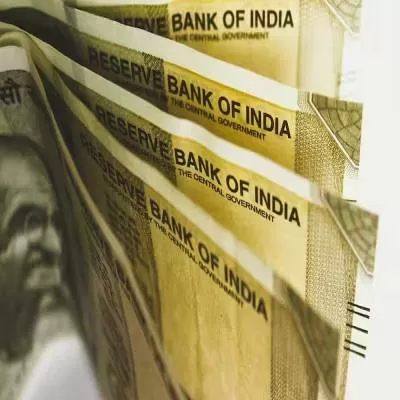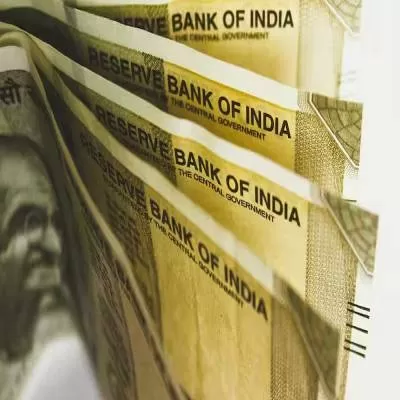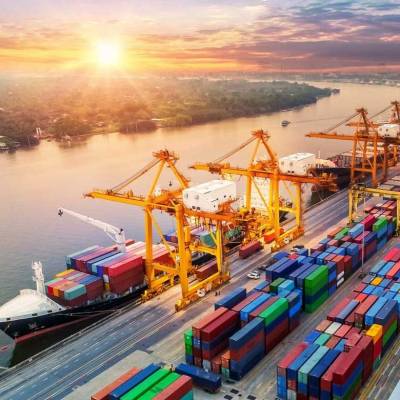- Home
- Infrastructure Transport
- ROADS & HIGHWAYS
- Fastest Growing Construction Companies in India
Fastest Growing Construction Companies in India
With the recent marginal uptick in economic activity, we have seen utilisation levels improve across sectors, which has led to 7-8 per cent traffic growth in the roads sector. The government has also accelerated the fund allocation to various sectors in the Union Budget, with allocation to roads and highways increased by 27 per cent to Rs 55,000 crore, to irrigation by 2x to Rs 17,000 crore and to railways by 17 per cent to Rs 117,000 crore. NHAI has also stepped up its target ordering in the roads segment to 10,000 km in FY2017 from 5,500 km in FY2016. The emphasis on low-cost housing, irrigation and roads is likely to create substantial construction opportunities for the sector, going forward. With macros improving, and measures to revive the PPP sector being taken through new forms of awarding (hybrid annuity) and new forms of financing (REITs and InVITs), a revival in stranded projects is expected, easing cash flows, while new project flows will provide growth visibility.
Reforms in the roads, construction and mining sectors will have a lasting impact on the business environment. Therefore, we can hope for a new wave of capex cycle in the medium-term itself.
Infrastructure creation The outlays on infrastructure have increased from Rs 7.7 lakh crore in FY2012 to Rs 10.2 lakh crore in FY2016. The target for spend on infrastructure has been at 9 per cent of the GDP for the Twelfth Five-Year Plan, implying a total corpus of $1 trillion, of which only about 56 per cent has been spent over FY2013-2016, which is still quite encouraging, considering the severe slowdown in the global economy. Assuming GDP growth at 8 per cent, investment in infrastructure can be expected to increase to Rs 76 trillion over the next five years, assuming an increase in construction spend to 9 per cent of GDP, which provides significant opportunity for industry players.
The Central Government, along with the Reserve Bank of India (RBI), has taken measures to improve the funding environment for the infrastructure sector. The 5/25 scheme to increase the tenor of loans for infrastructure projects, classifying loans given to the roads sector as secured, and easing of norms for refinancing of project loans, are among a few. Apart from these, measures like setting up of the National Infrastructure Investment Fund, where the Central Government would infuse Rs 200 billion as equity, which will be leveraged to take the fund to over Rs 1,000 billion to be used for infrastructure investment, are likely to increase the fund flows to the sector.
Growth opportunity
With the focus on infrastructure, awarding activity has also seen a rise over the last two years, especially in sectors such as roads, railways and irrigation. The roads segment has seen awarding increase by the Centre (NHAI and MoRTH) to over 9,000 km (4,300 km by NHAI and 5,000 km by MoRTH) in FY16, from 1,100 km in FY2013. The target for award by the two has been increased by 2.5x for FY17e to 25,000 km (10,000 km by NHAI and 15,000 km by MoRTH). We expect project awards by NHAI to be at least 6,000 km in FY2017e, and another 6,000 km by MoRTH.
In the irrigation sector, a total of 81 stranded projects are to be revived, and the total spend over the next five years to complete these projects is estimated at Rs 85,300 crore. In railways, over the next three years, the total spend as per Vision 2020 is Rs 693,300 crore.Leverage levels under check Stringent funding requirements set by banks made most construction players turn their focus back to the EPC business. Focus on low capital-intensive cash-contracting business, along with efforts to divest stake in BOT projects and improving working capital situation, has helped construction companies reduce leverage levels. The debt to equity ratio for the companies have improved from 1.4x in FY14 to 1.2x in FY16.
Hybrid annuity takes the lead
Awarding projects through the BOT model reached its peak in FY12 when 100 per cent of the awarded projects were through this route. However, due to liquidity squeeze among the developers, banks tightened financing for BOT projects, and a slowdown in traffic led to lower appetite for these ventures. Hence, in many bids, there was no participation by developers, after which there was a shift towards EPC awards by NHAI. The newly introduced concept of the hybrid annuity model comes with an inherent benefit of lower capital requirement for the awarding authorities, and has become popular with the developers as well. We expect FY17e to have a 40 per cent share in awarding through the hybrid route. Of the 6,000 km expected in FY17e, ~3,000-3,500 km is expected to be awarded through the EPC route, ~2,000-2,500 km through the hybrid route, and the remaining through BOT toll and annuity.
The infrastructure sector in India has gone through a stressful time during the period FY2011-2014, due to delay in clearances, aggressive bidding by developers, and stranded projects. This, along with reduced government spending, stressed finances of the private sector and tightened bank funding, has resulted in a decline in investments in this space. However, many initiatives by the government including the formation of dispute resolution committees, faster clearances, easing of financial norms and increased spending, have created an optimistic financial and regulatory environment and improved investor sentiments. With the recent marginal uptick in economic activity, we have seen utilisation levels improve across sectors, which has led to 7-8 per cent traffic growth in the roads sector. The government has also accelerated the fund allocation to various sectors in the Union Budget, with allocation to roads and highways increased by 27 per cent to Rs 55,000 crore, to irrigation by 2x to Rs 17,000 crore and to railways by 17 per cent to Rs 117,000 crore. NHAI has also stepped up its target ordering in the roads segment to 10,000 km in FY2017 from 5,500 km in FY2016. The emphasis on low-cost housing, irrigation and roads is likely to create substantial construction opportunities for the sector, going forward. With macros improving, and measures to revive the PPP sector being taken through new forms of awarding (hybrid annuity) and new forms of financing (REITs and InVITs), a revival in stranded projects is expected, easing cash flows, while new project flows will provide growth visibility. Reforms in the roads, construction and mining sectors will have a lasting impact on the business environment. Therefore, we can hope for a new wave of capex cycle in the medium-term itself. Infrastructure creation The outlays on infrastructure have increased from Rs 7.7 lakh crore in FY2012 to Rs 10.2 lakh crore in FY2016. The target for spend on infrastructure has been at 9 per cent of the GDP for the Twelfth Five-Year Plan, implying a total corpus of $1 trillion, of which only about 56 per cent has been spent over FY2013-2016, which is still quite encouraging, considering the severe slowdown in the global economy. Assuming GDP growth at 8 per cent, investment in infrastructure can be expected to increase to Rs 76 trillion over the next five years, assuming an increase in construction spend to 9 per cent of GDP, which provides significant opportunity for industry players. The Central Government, along with the Reserve Bank of India (RBI), has taken measures to improve the funding environment for the infrastructure sector. The 5/25 scheme to increase the tenor of loans for infrastructure projects, classifying loans given to the roads sector as secured, and easing of norms for refinancing of project loans, are among a few. Apart from these, measures like setting up of the National Infrastructure Investment Fund, where the Central Government would infuse Rs 200 billion as equity, which will be leveraged to take the fund to over Rs 1,000 billion to be used for infrastructure investment, are likely to increase the fund flows to the sector. Growth opportunity With the focus on infrastructure, awarding activity has also seen a rise over the last two years, especially in sectors such as roads, railways and irrigation. The roads segment has seen awarding increase by the Centre (NHAI and MoRTH) to over 9,000 km (4,300 km by NHAI and 5,000 km by MoRTH) in FY16, from 1,100 km in FY2013. The target for award by the two has been increased by 2.5x for FY17e to 25,000 km (10,000 km by NHAI and 15,000 km by MoRTH). We expect project awards by NHAI to be at least 6,000 km in FY2017e, and another 6,000 km by MoRTH. In the irrigation sector, a total of 81 stranded projects are to be revived, and the total spend over the next five years to complete these projects is estimated at Rs 85,300 crore. In railways, over the next three years, the total spend as per Vision 2020 is Rs 693,300 crore.Leverage levels under check Stringent funding requirements set by banks made most construction players turn their focus back to the EPC business. Focus on low capital-intensive cash-contracting business, along with efforts to divest stake in BOT projects and improving working capital situation, has helped construction companies reduce leverage levels. The debt to equity ratio for the companies have improved from 1.4x in FY14 to 1.2x in FY16. Hybrid annuity takes the lead Awarding projects through the BOT model reached its peak in FY12 when 100 per cent of the awarded projects were through this route. However, due to liquidity squeeze among the developers, banks tightened financing for BOT projects, and a slowdown in traffic led to lower appetite for these ventures. Hence, in many bids, there was no participation by developers, after which there was a shift towards EPC awards by NHAI. The newly introduced concept of the hybrid annuity model comes with an inherent benefit of lower capital requirement for the awarding authorities, and has become popular with the developers as well. We expect FY17e to have a 40 per cent share in awarding through the hybrid route. Of the 6,000 km expected in FY17e, ~3,000-3,500 km is expected to be awarded through the EPC route, ~2,000-2,500 km through the hybrid route, and the remaining through BOT toll and annuity.






















